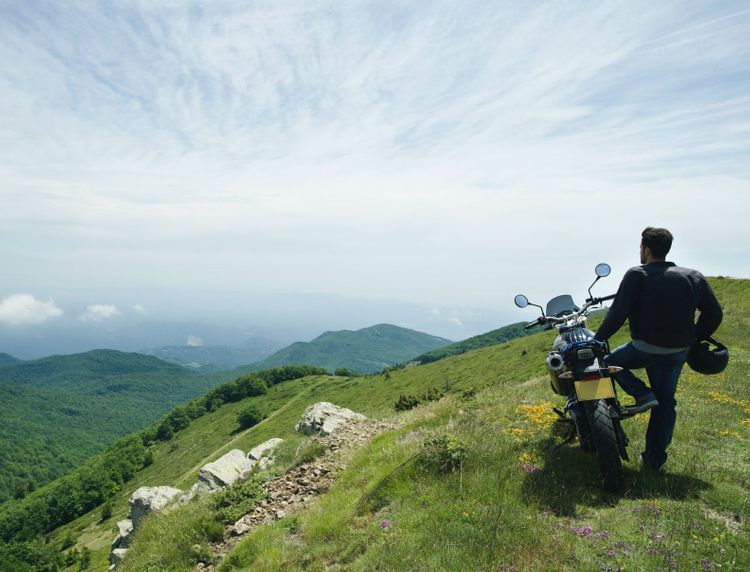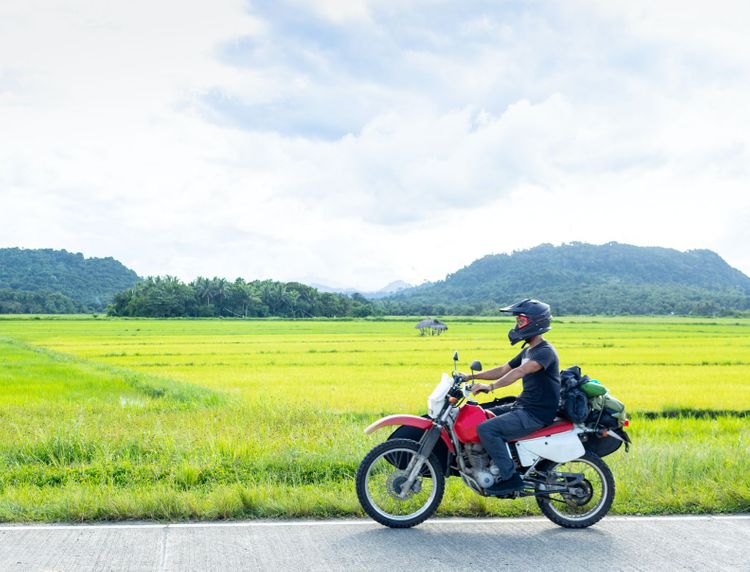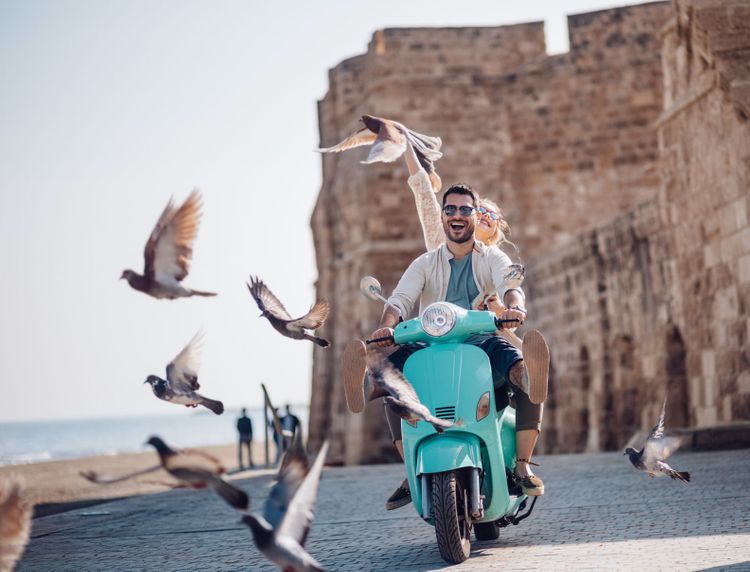Is it Good to Run the Motorcycle on Reserve All the Time?
Maybe you are too lost in the beauty of your journey, or you failed to take a look at your fuel indicator at the right time, but the fuel light has been warning you. If you don’t head to the nearest refuelling station before it is too late, you might be stranded with no alternative but to push your vehicle to the petrol pump.
To prevent these extreme scenarios, bike manufacturers provide the option of ‘reserve’ in bikes.
Running your bike on reserve is a fail-safe option in case the fuel in your main tank runs out. It helps the rider cover a few more miles to get to the nearest refuelling station. Let’s learn in detail what happens if you use the bike fuel on and off reserve feature often.
Share this article
List of Content
- Pros and Cons of Running the Bike on Reserve
- How to Switch the Bike Reserve On and Off
- In Conclusion
Pros and Cons of Running the Bike on Reserve
If you wish to extend the life of your bike, it is important to be mindful of things that are harmful to its longevity. Whether it is timely refuelling, servicing your bike at regular intervals, cleaning it regularly, or investing in bike insurance, all aspects play a role in optimising the performance of your bike and ensuring it stays as good as new for long.
Since features such as bike petrol reserve on or off are designed as an emergency option, riders need to know what happens if this feature is used frequently.
Pros of Running the Bike on Reserve
To start with the pros, when you use your bike on reserve, you can get rid of any dirt on the oil tank.
To elaborate, when you refuel your bike, some dirt can settle at the bottom of the tank. With repeated refuelling, this dirt can continue to accumulate at the bottom, with the possibility of eventually choking the pipes. This can cause damage to the bike.
However, when you run your bike on reserve, the fuel tank is emptied no dirt is collected in the tank. Using the reserve feature on certain occasions is the easiest way to completely clean your fuel tank so that no dirt accumulates in it.
Disadvantages of Running a Bike on Reserve
The feature for reserve in bikes is meant to be an emergency usage. So, you defeat the purpose of this fail-safe alternative when you continually ride your bike on reserve.
Although it won’t harm your motorcycle to run on reserve frequently, when the reserve is also drained, you have no safety net to rely on. You won’t be able to ascertain when your main fuel tank was emptied, and if you drain the reserve, it would mean labouring to push your bike to the nearest refuelling station.
This can be a particularly harrowing experience if you are on a long-distance trip and there is no fuelling station nearby. In these scenarios, unless you have roadside assistance cover on your bike insurance policy, you can find yourself in a very troubling situation.
In addition to this, there is also a safety concern to be mindful of. The fuel line of your bike uses an engine vacuum to pull fuel into the carburettor. This vacuum-operated valve is a safety feature that prevents fuel from flowing into the carburettor when the engine is not running.
When you use the reserve feature, this vacuum system is bypassed. Although this is rarely a problem, riders must know that they have eliminated the protective barrier between themselves and a flooded carburettor.
Considering the aforementioned information, it can be concluded that while there is no harm in the performance of your bike if you ride it on reserve, it can inconvenience you greatly if your reserve runs out. This will leave you with little alternative than to park your bike and look for fuel.
How to Switch the Bike Reserve On and Off
It is important to know the functionality features of your bike because this information can come in handy when you are facing a challenging situation. Knowing about the various systems of your bike also helps in ensuring the optimised performance of your vehicle. With that in mind, let’s learn how to keep the bike reserve on and off.
The reserve fuel switch is also called the fuel petcock valve or simply the fuel valve. This three-way valve has three switches - “ON,” “OFF,” and “RES.” The “off” and “on” switches refer to the fuel movement from the tank to the engine. “RES” is when you switch to the reserve tank. There is often a misconception that the fuel tank and the reserve are separate.
However, the reserve is simply a part of the main fuel tank. Let’s take a look at the functionality of the switches-
Off position- In this position, the fuel is not flowing from the tank to the engine. In simple terms, this means that the engine is cut off from the fuel flow. You can keep the switch for petrol on/off in the bike when you are not going to ride the bike for a long time. Even if your bike is not going to be used for the next two or three days, it is advised to keep the switch for petrol on/off in the bike.
On position- In the “on” position, the fuel can freely flow from the tank to the engine. This is the position the switch must be in when you are riding your bike. In this position, the bike petrol reserve is on/off.
Res position- In the “res” position, the fuel from the reserve tank can freely flow to the engine. When you have run out of fuel from the main tank, this is what you will have to switch on to get your bike to travel a few more miles until you get to the fuel station. It is important to note that the amount of fuel in the reserve tank is low, and if you are running on reserve, it means you will have to refuel as soon as possible.
If you wish to switch the reserve on your bike, you only have to turn on the reserve fuel switch, which is usually located on the left side of the bike, right under the fuel tank. If you were riding the bike and it ran out of petrol, the reserve switch would be in the “ON” position.
To change its position from “ON” to “RES”, you will need to turn the switch by 180 degrees. When you switch to this reserve position in the fuel tank, the fuel from the reserve tank begins flowing into the engine to generate power.
You can then turn on the ignition and ride to the nearest fuelling station to refill your petrol.
In Conclusion
Now that you know the functionality and method of keeping bike fuel on or off reserve, you can cruise through the streets in a worry-free manner. However, to ensure the wholesome safety of your trips, it is important to invest in comprehensive insurance for 2-wheelers.
A comprehensive bike insurance policy offers financial protection against unforeseeable scenarios such as accidents, natural and man-made disasters, theft, vandalism, etc., along with any liability to third parties.
You can even strengthen your policy with add-ons that offer an added layer of protection to a basic cover. For example, the roadside assistance cover on your bike insurance, you get immediate assistance if your bike breaks down in the middle of nowhere to take care of a variety of issues such as flat tyres, dead battery, fuel requirement, mechanical/electrical repairs, etc.
However, before investing in any policy it is advised to appropriately analyse your insurance needs and compare two-wheeler insurance policies.
Share this article
Latest from our blogs

5 Tips To Keep Your Two Wheeler Looking New
Make sure to wash it often. This keeps dirt and other unwant...
Read More
5 things you did not know about two wheeler insurance
In a time of heavy traffic and accidents, two wheeler insura...
Read More
What Does It Take to Be a Good Biker?
You must have wondered what it takes to become a better ride...
Read More